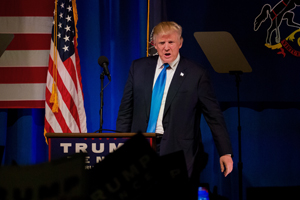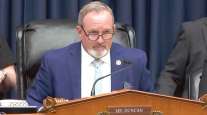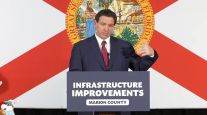Analysis: The Trouble With Donald Trump's Infrastructure Plan

During the Obama years, most conservatives were against fiscal stimulus and most liberals were for it. Now that President-elect Donald Trump has proposed a major boost in government spending, many commentators will feel urges to migrate to the opposite positions. In light of this ideological turmoil, we should keep a clear head on when government spending truly stimulates the economy.
The first principle is not to be fooled by increases in measured gross domestic product. A new Trump stimulus would probably boost GDP, but that doesn’t mean it would be working well.
RELATED: Trump Touts Infrastructure
Measured GDP just doesn’t capture the relevant trade-offs for evaluating government spending. For instance, a lot of U.S. workers are producing organizational capital. They work on business plans, building client lists, developing marketing strategies, cultivating customer relations and performing other future-oriented activities common to service-sector enterprises. On any given day, most of us are not churning out additional widgets.
Government stimulus, on the other hand, usually is oriented toward concrete outputs such as roads and bridges or military hardware. It’s more like old-style manufacturing.
Stimulus therefore pulls workers out of producing organizational capital. In the short run, measured GDP goes up, yet the economy may or may not be doing better overall, especially in the longer run. In desperate situations, it is indeed prudent to emphasize the short run, but that is not obviously the case in 2016, when we are nearing full employment and last quarter’s GDP growth was estimated at a respectable 2.9%.
There are valuable infrastructure projects governments could and should spend money on, like road maintenance. But a short-term rise in GDP is not itself an good indicator of quality or success. Even if the Trump administration makes bad infrastructure decisions and wastes a lot of money, measured GDP still is going to rise. Don’t be fooled.
There is another reason why short-run GDP is a misleading guide to stimulus: the money spent eventually has to be paid back. So today’s GDP boost will be offset by a contraction in five, 10 or 20 years.
In Keynesian theory, fiscal policy only works well if you use it in down times and pay off the bill during a boom. Trump seems ready to do the opposite by upping spending as the economy approaches full employment. After that? Recent history suggests that many countries switch back to austerity precisely when they shouldn’t. That is a reality proponents of “spend more now” have to reckon with, and it means stimulus can bring a bigger contraction in the future than the boost it gives today.
For years, I have been reading about evidence that the 2009 fiscal stimulus promoted by the administration of President Barack Obama was good for the American economy. Study after study shows that it boosted GDP across a two- to three-year time horizon, as indeed it did. Furthermore, some parts of the stimulus truly were beneficial, for instance the aid to state and local governments that limited the need for temporary layoffs. But a serious evaluation of the Obama stimulus, and its longer-term consequences, remains to be done.
Many Democratic economists are in a bind when it comes to criticizing the forthcoming Trump stimulus, as they’ve spent the last seven years neutering their best arguments. The awkwardness is evident in writers such as Paul Krugman, who has argued for a massive stimulus for many years, including for 2016, claiming it would come close to paying for itself, even if much of the money were to be wasted. Now Krugman sees his archenemy Trump recommending more government spending, and he can’t bring himself to simply endorse someone else’s version of that idea.
Republican legislators also face a dilemma. Many of them, including Paul Ryan, went along with the big government spending increases of the Bush administration, when Republicans controlled the executive and legislature. The conservative wing of the party made them swear to never do it again, but will they stick to that promise? I predict Trump will offer a big enough tax cut to get most of them on the spending bandwagon once again.
The real danger is that a year or two from now, Trump will be a popular president, pointing to real gains in GDP numbers, even if his policies aren’t better for the longer run.
The best scenarios for a Trump presidency involve a lot of checks and balances, backed by public skepticism, not more popularity and populism. It’s up to economists to help enforce such critical thinking, but the fiscal-policy rhetoric of pro-stimulus economists has been pushing discourse in the wrong direction. That’s one bill to come due sooner than many of us had been expecting.




